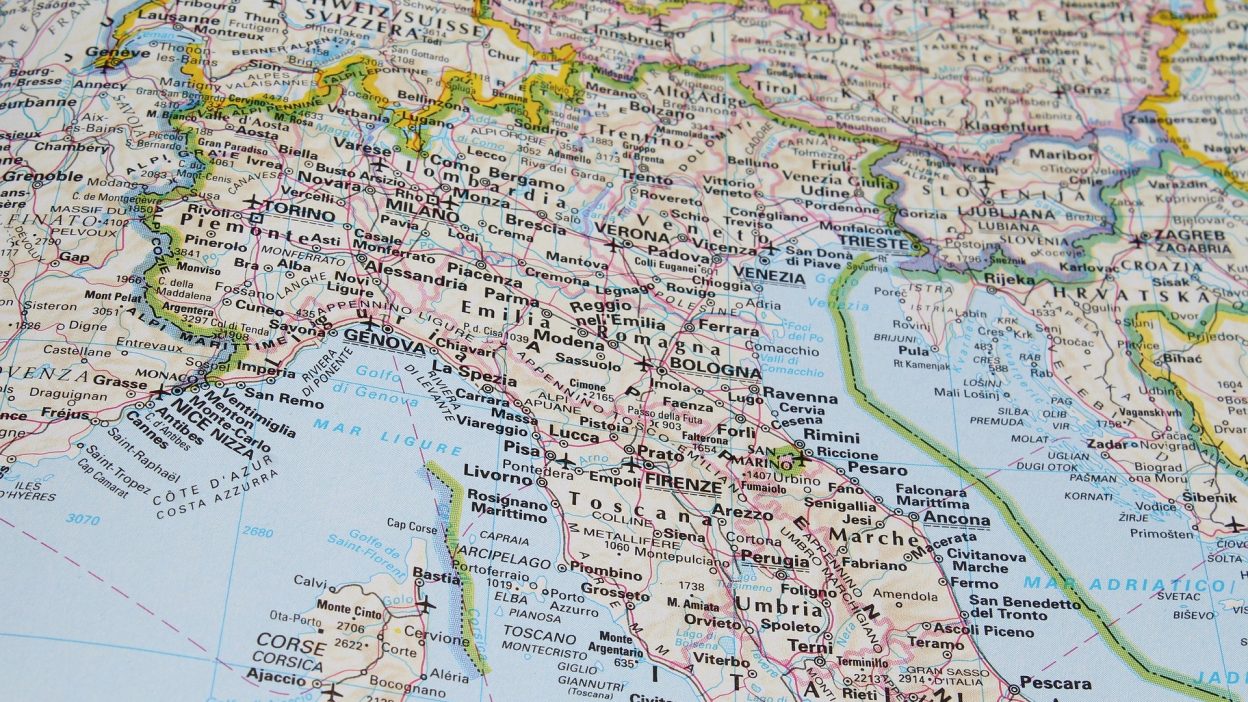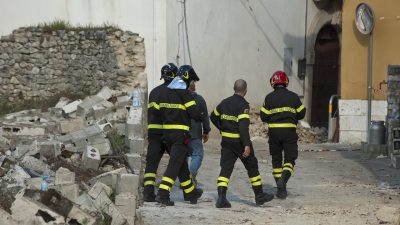Lessons Italy Learned Too Late
The Earth Shook: How the 1915 Avezzano Earthquake Changed Everything
On the morning of January 13, 1915, the quiet town of Avezzano in central Italy was struck by a powerful earthquake, registering 7.0 on the Richter scale. The region, not accustomed to such powerful seismic activity, was utterly unprepared for the devastation that followed. Buildings collapsed within seconds, and entire communities were wiped off the map. The earthquake not only changed the physical landscape but also left deep scars on the social and economic fabric of Italy. The destruction of Avezzano, with its historical architecture and cultural landmarks, marked a significant moment in Italy’s history, forever altering its approach to disaster preparedness and response.
The aftermath of the quake saw Italy struggling to cope with the magnitude of the disaster. With thousands dead, many more injured, and entire towns devastated, the recovery process was slow and painful. But it was also a pivotal moment in the development of modern disaster response strategies. The quake highlighted the need for better building regulations, disaster management systems, and an understanding of the importance of emergency planning, lessons that Italy, and the world, would learn too late to prevent the catastrophe but not without significant impact on future policies.
The Untold Truth Behind the 1915 Avezzano Earthquake Disaster
The 1915 Avezzano earthquake was not just a random natural disaster—it was a result of a complex series of geological factors that were largely misunderstood at the time. Situated on the border of the Apennine mountain range, Avezzano and the surrounding areas were prone to seismic activity, but no one expected a quake of such magnitude. The region had experienced minor tremors before, but nothing that could have prepared them for what was about to occur. The truth is, seismologists had not yet fully understood the behaviour of fault lines in this area, which ultimately led to the devastation.
What is often overlooked is the lack of preparation and the limited knowledge of earthquake-resistant building techniques. Many of the buildings in Avezzano were constructed without any regard for seismic activity, making them particularly vulnerable to collapse. The earthquake exposed the fragility of much of Italy’s infrastructure, revealing the catastrophic consequences of ignoring basic engineering principles in seismic zones. The true extent of the disaster didn’t just lie in the loss of life but also in the massive infrastructural damage that would take decades to rebuild.
Shattering Lives: The Hidden Consequences of the 1915 Avezzano Earthquake
- Psychological Trauma: The earthquake didn’t just cause physical damage; it left deep psychological scars on survivors. Many lost loved ones, and families were left without homes, possessions, or any sense of normalcy. The emotional impact was severe, with survivors facing long-term psychological struggles, including PTSD. The aftermath left a community struggling to rebuild not just its homes but also its collective mental health.
- Economic Devastation: The economic cost of the earthquake was staggering. Avezzano, once a thriving town, saw its businesses destroyed, agricultural fields rendered useless, and its infrastructure reduced to rubble. The cost of rebuilding was immense, and the town was left in a state of economic paralysis for many years. The Italian economy, still recovering from the First World War, faced even further strain as resources were diverted to aid the affected regions.
- Displacement and Refugees: Many survivors of the 1915 Avezzano earthquake were left homeless, and entire families were forced to live in temporary shelters or seek refuge elsewhere. This displacement caused a ripple effect across the region, with many people abandoning their damaged homes for areas that could offer safety. The social fabric of the affected communities was torn apart, and the rebuilding process required not only physical reconstruction but also the restoration of the displaced communities.
Why the 1915 Avezzano Earthquake Was More Destructive Than We Thought
- Magnitude and Impact: The 1915 Avezzano earthquake was more powerful than initially realised. Its magnitude of 7.0 caused widespread devastation across the region, but its full impact was not felt immediately. The lack of proper monitoring and understanding of seismic waves at the time meant that the quake’s true magnitude was underestimated, leading to delayed response efforts.
- Poorly Built Infrastructure: Many buildings in the affected areas were poorly constructed, which exacerbated the destruction. With no building codes in place to address earthquake risks, the collapse of structures was inevitable, and the death toll was far higher than it could have been had buildings been more resilient.
- Limited Preparedness: Italy, at the time, had little to no disaster preparedness plans. The government was slow to respond, and resources were scarce. It wasn’t until the scale of the disaster became apparent that international aid began to trickle in. In hindsight, it’s clear that better preparation could have mitigated some of the damage and loss of life.
The Aftermath of the 1915 Avezzano Earthquake: Was Our Response Enough?
In the wake of the Avezzano earthquake, Italy’s response was largely inadequate. While local authorities attempted to provide immediate relief, they were overwhelmed by the sheer scale of the disaster. The response was slow, and the government struggled to mobilise resources quickly enough to assist the affected areas. Many survivors were left without shelter, food, or medical care in the critical first days after the quake.
The lack of preparedness and coordinated response was evident, and it became clear that Italy’s disaster management systems were not equipped to handle a catastrophe of such magnitude. The international community did offer assistance, but it came too late for many. Had there been better disaster planning and a faster response, the loss of life could have been significantly reduced, and the recovery process could have been far smoother.
A Wake-Up Call: What We Missed About the 1915 Avezzano Earthquake
The 1915 Avezzano earthquake should have been a wake-up call, not only for Italy but for the world. It exposed the dangers of neglecting earthquake preparedness and infrastructure resilience. However, despite the devastation, the lessons learned from this tragedy were not fully implemented at the time. Earthquake-resistant building codes, early warning systems, and public education about seismic risks were not prioritised until much later.
Even though the tragedy forced the government and civil engineers to rethink their approach to disaster management, the real, lasting change came much too slowly. Many of the issues that contributed to the earthquake’s devastation were not properly addressed in Italy’s subsequent building projects or disaster response plans. It wasn’t until more recent quakes, such as the 2009 L’Aquila earthquake, that the lessons from Avezzano began to be taken more seriously.
When Earthquake Strikes: How the 1915 Avezzano Earthquake Revealed Italy’s Vulnerabilities
The 1915 Avezzano earthquake laid bare Italy’s vulnerability in the face of natural disasters. The country was, at the time, ill-prepared for such an event, and the weaknesses in its infrastructure and disaster management systems were evident. Italy’s roads, buildings, and communication networks were woefully inadequate for dealing with a disaster of this scale. The quake exposed the fragility of a nation still recovering from the devastation of the First World War and unprepared for the seismic risks inherent in the Apennine region.
In the years following the earthquake, Italy began to address some of these vulnerabilities, but the 1915 disaster was a stark reminder of how crucial it is to be prepared for earthquakes, especially in areas prone to seismic activity. The country’s lack of readiness, both in terms of infrastructure and response systems, contributed to the scale of the disaster and the difficulties in recovery.
Conclusion: What We’ve Learned from the 1915 Avezzano Earthquake – A Final Reflection
The 1915 Avezzano earthquake was a defining moment in Italy’s history, but it was also a lesson in the importance of disaster preparedness. Italy learned the hard way that seismic risks cannot be ignored, and the failure to plan and build resilient infrastructure can have catastrophic consequences. While the country has made significant strides in earthquake preparedness since then, the lessons from Avezzano should never be forgotten. We must continue to learn from the past to prevent future tragedies.
5 Short FAQs
- What caused the 1915 Avezzano Earthquake?
- The earthquake was caused by a shift along the fault lines in the Apennine mountain range, where the Earth’s crust moved, resulting in a powerful seismic event.
- How many people died in the 1915 Avezzano Earthquake?
- Approximately 30,000 people died as a result of the earthquake, making it one of the deadliest natural disasters in Italian history.
- How long did it take to rebuild Avezzano after the earthquake?
- Rebuilding Avezzano took over a decade, with significant delays due to the lack of resources and the scale of destruction.
- Were there any major failures in the response to the 1915 Avezzano Earthquake?
- Yes, the response was slow and inefficient, with limited preparedness and insufficient resources to aid the survivors in the immediate aftermath.
- What lessons have we learned from the 1915 Avezzano Earthquake in modern-day disaster management?
- The key lesson is the importance of disaster preparedness, early warning systems, and resilient infrastructure to minimise the damage caused by earthquakes.
References:
Wikipedia: 1915 Avezzano Earthquake
ABRUZZISSIMO Magazine: Avezzano Earthquake of 1915
Servizio Nazionale – Protezione Civile: The Marsica Earthquake
Getty Images: 1915 Avezzano Earthquake Stock Photos
GeoScienceWorld: The Avezzano Earthquake of January 13, 1915




